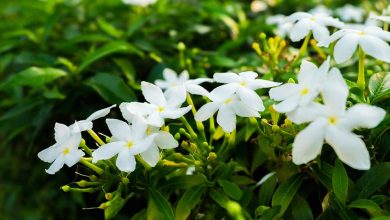Sowing a Fig Tree: [Cultivation, Care, Irrigation, Substrate and Pests]
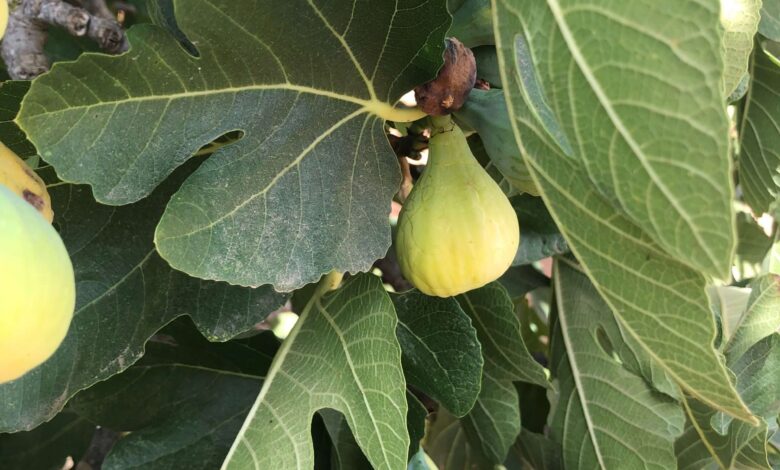
Did you know that for the Greek philosopher Plato, the fig was his favorite fruit?
Fig trees are wonderful trees. They grow quickly and can become gigantic. In addition, the shade they offer is spectacular. If you can also add to this that it offers a wonderful fruit (the fig), why not plant a fig tree in your garden or orchard?
Let’s go there
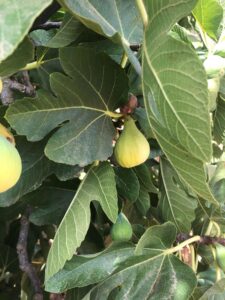 When? During the spring or fall . Avoid in very cold or hot seasons.
When? During the spring or fall . Avoid in very cold or hot seasons.- Where? Its growth is good in temperate zones. It adapts to different climates. Fig trees need many hours of light.
- How do we prepare the land? Rich in substrate , compost , well-decomposed manure … The richer the soil, the more likely that your fig tree will bear fruit.
- The ph of the earth? It adapts to limestone soil, tolerating pH levels between 8 and 8.5.
- How do we water? At first it is important to water abundantly. You can choose between drip or hose.
- How often do we water? What was said. If you have a fig tree seedling, it is recommended in hot season to water every day. The fig tree needs a lot of water at first. After several years it is able to obtain water from the most surprising corners.
- When to harvest? Observe the fruit . Feel it. If it is soft, it is ripe. Also if the skin is cracked.
- Plagues and diseases? Fruit fly, barrente, Barrillo, Nematodes, Fig mealybug, Caterpillars, Green mosquito, Fig fly, Negrilla, Root system rot, Trunk canker.
Characteristics of fig trees
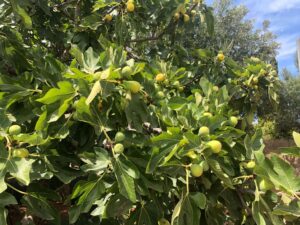 Its scientific name is Ficus carica , which derives from Caria.
Its scientific name is Ficus carica , which derives from Caria.
The fig tree is originally known to come from Asia Minor. However, in a short time its cultivation spread throughout the Mediterranean.
- Division: Phanerogams.
- Subdivision: Angiosperms.
- Subclass: Archiclamideas.
- Order: Urticales.
- Family: Moráceas.
- Genus: Ficus.
- Species: carica.
A fig tree that is born and grows wild is usually called Cabrahigo .
The sap of the fig tree is white. We recommend washing hands in case of coming into contact with it. The fig tree produces low-quality wood , and its trunk has a light gray color. When it reaches maturity, the diameter of the trunk is usually large.
How much can a fig tree average?
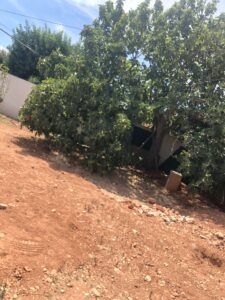 The fig tree, in perfect climatic, irrigation and substrate conditions can reach more than 10 meters in height. In addition to offering a spectacular shade as we have commented.
The fig tree, in perfect climatic, irrigation and substrate conditions can reach more than 10 meters in height. In addition to offering a spectacular shade as we have commented.
On many occasions, however, it grows bushy. Being able to reach only several meters in height. The latter usually occurs when the fig tree grows in environments with strong winds and / or sea breeze.
The root system of the fig tree
The fig tree has one of the most spectacular root systems within the tree . This allows you to get water in many areas.
The roots of fig trees reach depths of many meters downward and seek water everywhere.
This root system allows the fig tree to endure strong periods of drought and also long frosts.
How is the world production of figs?
The countries with the highest production of figs in the world are the following:
- Turkey.
- USA.
- Algeria.
- Greece.
- Italy.
- Spain.
It is estimated that the total production of figs around the world is close to a million tons and is produced mainly in the Mediterranean.
What are figs?
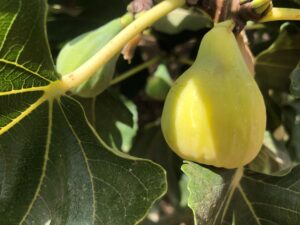 It has often been thought that the fig tree produces the fruits of figs. However, this is not exactly the case.
It has often been thought that the fig tree produces the fruits of figs. However, this is not exactly the case.
As already indicated, the fig is not the fruit of the fig tree but is a receptacle or sycon in which the flowers are found (200-300 in each sycon) and then the fruits. It is therefore a fruitlessness. The true fruits of the fig tree, located inside the sycon, are achenes.
Where to plant a fig tree?
Fig trees benefit from growing in temperate climates. Hence it has developed so well in the Mediterranean.
Cold areas and frost harm it. Although very low temperatures can lead to the death of the tree, its root system allows it to survive frost and the fig tree is able to recover after several years.
The fig tree is a deciduous tree, so this makes it better adapted to cold winters.
How to plant a fig tree step by step?
- Plant figs outdoors in early spring or late fall when the tree is dormant.
- For container figs, grow them using a potting soil mix and add thin bark chips to improve drainage.
- Keep the tree in full sun in summer. Make sure to add a high nitrogen fertilizer every 4 weeks in spring and summer.
- Water the tree moderately. In winter , move the tree indoors and keep the soil moist if possible.
- For outdoor fig trees , plant the tree in spring or early fall in full sun. Fig trees can grow in most types of soil as long as the soil is well drained and contains plenty of organic material.
- Give the fig trees plenty of space, at least 5 meters away from any buildings or other trees.
- Fig trees take deep roots if given the opportunity, so this must be taken into account when choosing a planting site.
- In the case of having your fig trees in a pot, prepare a hole deep and wide enough to transplant it.
- I water the hole before and after transplanting.
- With the right conditions, the fig tree is a grateful tree. It grows rapidly each year and needs little care.
Fig tree care
- Water the young fig trees regularly to help them establish and gain strength. In dry climates , water the fig trees considerably at least once a week.
- Unless they are grown in pots, most fig trees do not require regular fertilization. However, if your fig tree is not growing much (less than a meter per year), you can add nitrogen to the soil. Start applying nitrogen in late winter and finish in midsummer.
- You can also apply a layer of mulch around the tree to help prevent weeds and keep the roots moist.
- Fig trees require little pruning. During dormant season, be sure to remove all dead, diseased, or weak branches to encourage growth.
- If you have a heavy growth of figs, you can remove the fruit to encourage larger figs.
- If your area can withstand a particularly cold winter, fig trees planted outside can die on the ground. If the tree is a hardy variety, the underground part of the tree is likely not affected. Remove all dead wood while the tree is still dormant and find a new place for it to grow in the spring.
Irrigation in the fig tree
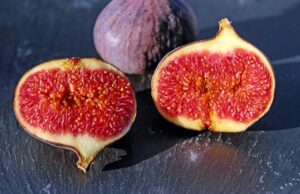 The fig tree is a traditionally dry tree. We must focus on giving it more water when it is growing and is still a young tree and also in production periods, where it may have the greatest needs.
The fig tree is a traditionally dry tree. We must focus on giving it more water when it is growing and is still a young tree and also in production periods, where it may have the greatest needs.
The most common irrigation system with fig trees, as with oranges or lemon trees in many areas, is flood or blanket.
However, it is being observed that drip irrigation gives good results as well, in addition to supplying significant water savings.
Graft a fig tree
Grafting is a technique rarely used in this fruit tree, except for varietal changes, since until now it is used as a direct producer.
When grafting is to be performed, good results are obtained with both gusset and plate. In both cases, this can be done as a bud, sleeping as if by eye watching, at the end of summer or in spring, respectively.
In any case, as the fig tree produces a lot of latex, it is necessary to make an incision in the pattern and let the latex come out until it stops exuding and then carry out the graft. Otherwise the% of yore could be high.
When to consume and collect figs?
The optimal consumption of figs occurs when they reach maturity.
But how can we know?
There are two ways:
- The first is by feeling the fruit itself. The softer it is, the more mature.
- The second is by looking at your layers of skin. The more cracked, the more mature.
Types of fig trees
Cabrahigo or wild figs
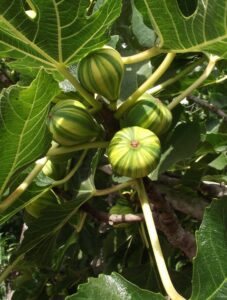 They are very common since they grow anywhere. However, they have only male flowers .
They are very common since they grow anywhere. However, they have only male flowers .
Smyrna fig trees
They grow mainly in North Africa and the Middle East. It is also grown in California. They pollinate through the pollen of the cabrahigo fig trees, mentioned above.
Biferous figs
Both male and female flowers are produced on its syconics. That is, they are self-fertile. There is no pollination or they do not require it for the development of the fruit.
Common fig trees
They give harvest in August and September. They are the most common fig trees.
To learn more, read: Varieties of fig trees .
Fig tree pests and diseases
These are the different pests and diseases that can affect fig trees:
- Fruit fly.
- Barrente.
- Barrillo.
- Nematodes.
- Fig tree mealybug.
- Caterpillars .
- Green mosquito.
- Fig fly.
- Bold.
- Root system rot.
- Canker of the trunk .
Further reading
- The cultivation of the fig tree, by Pablo Mlegarejo Moreno.
- Incidence of the fig tree mosaic in two areas of eastern
Spain. - Plagues and diseases of the fig tree, by E. Casadomet; M. López Corrales; F. Pérez Gragera; M. Senero; J. Pérez Ross; J. Del Moral at the Extremadura Scientific and Technological Research Center (CICYTEX-La Orden)
- The cultivation of the Fig Tree, by M. López.

![Photo of How to Plant Chives in [13 Steps]: When, How and Where?](https://www.complete-gardening.com/wp-content/uploads/2022/08/how-to-plant-chives-in-13-steps-when-how-and-where-390x220.jpg)
![Photo of Climate of Argentina: [Characteristics, Flora, Fauna and Adaptability]](https://www.complete-gardening.com/wp-content/uploads/2022/08/climate-of-argentina-characteristics-flora-fauna-and-adaptability-390x220.png)
